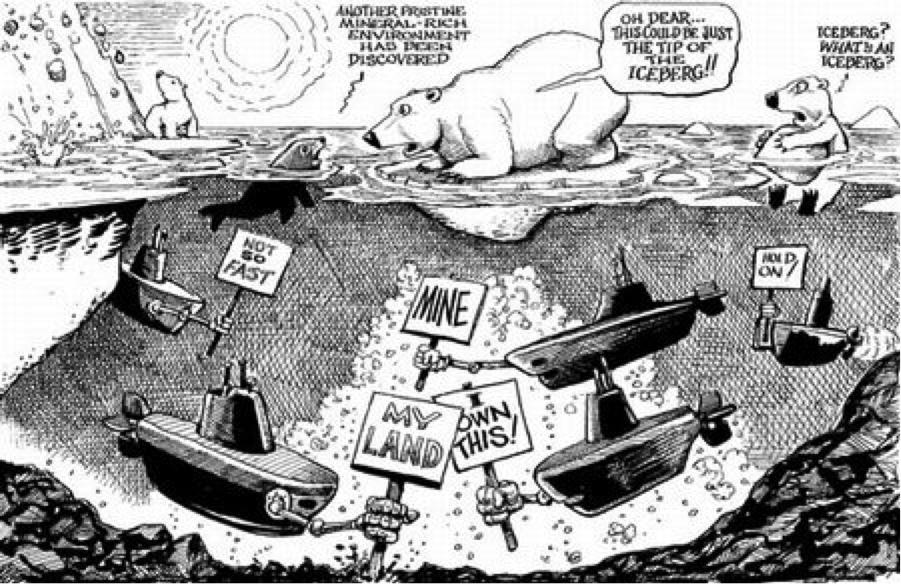Defence procurement, and its perpetual reform, are concepts inextricably linked to a states’ ability to both protect itself, and provide strategic industry a framework for future growth. This much is clear.
Yet the scale of the endeavour makes it one of the more complex organizational mandates a state can carry out. Projects are not only driven by what is technologically and economically feasible, they must also balance regional interests with that of the country at large.
The intense competition inherent to large government acquisition programs often attracts organizations with conflicting motives and culpabilities. This type of operating environment, further complicated by conflicting regional interests, regularly results in inefficient operations, the proliferation of fraud/waste/abuse, and the inadequate administration of laws and regulations intended to govern said programs.
It should come as no surprise that large scale procurement will inevitably contain an element of waste; however given the spectre of budgetary austerity, public disapproval of such waste can be expected to intensify. Thus, a window may be opening providing further impetus for reform.
This paper will briefly delve into three avenues of defence procurement reform emphasising improvements in efficiency and accountability within the acquisition process. Specifically, this includes institutional adjustments to improve the transparency and accountability at the ministerial level, implementing a formal defence industrial policy, and a controversial proposal to inject private sector management within various stages of the procurement cycle.
Canadian Defence Industry
According to the Canadian Association of Defence and Security Industries (CADSI), Canada’s defence industry employs 70,000 Canadians, generates $10-billion a year in sales, and exports 50% of what is domestically produced.
By spending approximately 1.5% of GDP on defence, Canada represents a relatively small market in terms capital expenditure. Although there are exceptions, Canadian industry is largely a supplier of components and subsystems rather than a larger system integrator. As such, the Canadian defence industry has a limited capacity to commercialize complex weapons systems on the scale of larger markets like the US, France, or the UK.
With an intended capital expenditure of $240-billion over the next 20 years, Canada’s current government has re-prioritized defence spending within the federal budget. This expenditure not only represents an increased financial commitment to the Canadian Forces, it represents a rejuvenation of the Canadian defence industry. However, the pressures of fiscal austerity can be compounded by a degraded public opinion of defence spending. Thus, reform must not only deliver efficiencies, it must also deliver results easily interpreted by the public. The first step in this process involves “demystifying” who is accountable for procurement decisions.
Institutional Reform
Unlike most industrialized countries, Canada divides ministerial accountability for equipment acquisition and the domestic industrial base. The acquisition process involves a number of organizations; most prominent of which are the Department of National Defence (DND), Public Works and Government Services Canada (PWGSC), and Industry Canada (IC). Within this structure conflicts between the bureaucracies must wait to be assuaged by formalized processes. Thus, there are inherent inefficiencies within the current system, or system of systems, as each organization strives to meet its individual mandate while supporting a collective acquisition mandate.
[captionpix align=”right” theme=”elegant” width=”320″ imgsrc=” http://www.cbc.ca/gfx/images/news/topstories/2011/07/05/li-fantino-620-cp474770.jpg” captiontext=” Responsibility for DND procurement lies with the Associate Minister of National Defence, currently Julian Fantino. Here, Minister Fantino addresses reporters. Photo courtesy of Sean Kilpatrick/The Canadian Press.”]
Given the complex nature of the current system, one avenue of reform involves making the DND acquisition cycle the responsibility of a separate and distinct organization. Such an agency would require a Cabinet Minister at its head; thus, providing clear lines of accountability, informed direction for industry, and alleviating many of the choke points displayed by the current organizational structure.
Supporters of the single agency contend that it would expedite the acquisition cycle by reducing “staff processes” within and between the current combination of organizations responsible for DND procurement. Furthermore, the single agency would be better positioned to develop and retain DND specific staff competencies by reducing the movement of experienced personnel between departments.
Such an organizational arrangement would have the further benefit of being easily interpreted by the public. It could be argued that the inefficient use of tax payer dollars spurs one level of discontent, while being unable to understand the process or hold a person accountable represents a higher, and much more destructive, level of discontent.
Consolidating the institutions responsible for defence procurement into one agency offers the prospect for increased efficiencies and unambiguous lines of accountability. This is essential to producing and organization the taxpayer can comprehend and feel confident in.
Defence Industrial Policy
The Canada First Defence Strategy (CFDS) provides domestic industry with forward looking information regarding the equipment needs of DND. However, this commitment falls far short of a formal industrial policy. According to the Canadian Association of Defence and Security Industries (CADSI), “A [Canadian] defence industrial policy would define the industrial capabilities Canada holds to be essential to its strategic defence and economic interests – which must be nurtured and developed in Canada.”
A comprehensive defence industrial policy would provide the government-industry nexus with a framework for ongoing cooperation and development. Canadian industry is best positioned to compete for contracts, or seek out competitive advantages, when it is aware of the capabilities DND has recognized as critical for future operations.
The defence industrial policy would begin with an honest assessment of the state of the domestic defence industry. It would require various federal departments like Export Development Canada (EDC), The Canadian Commercial Corporation (CCC), The Department of Foreign Affairs and International Trade (DFAIT), along with the regional economic development agencies, to align operations and promote the growth and competitiveness of the domestic defence sector.
This extensive undertaking would require constant feedback through, open, transparent and accountable channels. To inform and encourage the process a Strategic Defence Review could be held in the first session of each new Parliament – akin to the Quadrennial Defense Review held every four years in the United States. This review would work to update both government and industry on the state of defence technology, readiness, and strategic objectives central to DND future operations.
Overall, a defence industrial policy would provide Canadian industry a concrete framework to make informed investment decisions in the pursuit of securing domestic DND contracts.
Private Sector Management
For the past 25 years DND’s Materiel organization has inhabited what can only be described as a schizophrenic operating environment. From the budget cuts of the 1990’s, to the explosion of activity required to equip the Canadian Forces for Afghanistan, to the impending exodus of highly experienced staff belonging to the boomer generation, DND procurement expertise is increasingly overextended. Such an environment wreaks havoc on the organization’s ability to attract and retain personnel with requisite knowledge to navigate the government-industry nexus.
According to CADSI, “An overly thin layer of experienced and knowledgeable defence procurement, contract and program managers in Government is decreasing defence program transparency, accountability and consistency, and increasing risk avoidance and redundant layers of process and management to compensate.”
Simply put, the lack of human resources with large capital equipment project experience is limiting the wider organization`s operational efficiency and effectiveness.
One controversial solution involves experimentation with private sector project management and delivery. A 2009 report for the UK Ministry of Defence titled, Review of Acquisition for the Secretary of State for Defence, outlines some of the intricacies central to forming a DND-private sector partnership. In stark contrast with Canada, the UK government has proven far more willing to tests the boundaries of private sector service delivery in traditionally public sector spheres of influence –albeit with mixed results.
In Canada such a contractual arrangement would be similar to that of other Public Private Partnerships (P3) outside DND – with obvious security and conflict of interest caveats built-in. Generally speaking, the private sector would represent the “delivering body” responsible for individual asset delivery within predetermined parameters including cost, capability and procurement cycle timeframe. While the public sector would represent the “deciding body” charged with capability planning, project and programme investment decisions, and program assessment.
As with any P3 agreement, the devil will lie in the details. Therefore, it will be important to get the contracts right. Contentious areas of interest would include: the right of government to maintain ownership of assets, security considerations, contingencies for re-nationalization, and an effective assessment of plausible conflicts of interest.
According to the 2009 UK MoD report, the insertion of private sector management is not “designed to “tighten screws” on suppliers, but to provide a more consistent, professional and transparent contracting interface with the [private sector partner].” Furthermore, by incentivizing specific aspects of individual contracts, like completion time or budgetary stipulations, private sector management would be less likely to take on risks commonly associated with delays and increased costs. (For example, immature technology, requirements creep, and increased systems complexity)
The aim of experimenting with private sector management is to objectively determine where holes in public sector management lie, how to allocate risk more effectively within the procurement cycle, and finally, what can be done to incorporate outside expertise –if indeed there is a deficiency in the current system.
The National Ship Procurement Strategy
Any analysis of procurement reform would be incomplete without an exploration of National Ship Procurement Strategy (NSPS). With an estimated budget allocation of $38-billion over the next 30 years, the NSPS represents one of the largest defence procurement initiatives in Canadian history. Initial figures hint that the renewal of the federal fleet will support some 15,000 jobs annually over the next 30 years.
Although the NSPS is far from complete, the strategy has thus far received broad based public support. Given the size of the contracts and the economic implications for regions ether winning or losing contracts, this is a significant accomplishment. Many of the aforementioned themes of procurement reform, including industrial policy and private sector expertise, were internalized within the NSPS.
[captionpix align=”left” theme=”elegant” width=”380″ imgsrc=”http://shipsstarthere.ca/cont/Bid-Submission.jpg” captiontext=” Irving Shipbuilding staff in Halifax show their excitement to get started. Photo courtesy of ShipsStartHere.ca.”]
The private sector was well represented throughout the competition by firms like First Marine International, KPMG and PricewaterhouseCoopers. These organizations provided expertise and internationally recognized benchmarks regarding costs and evaluation criteria. They conducted assessments of the current state of shipyards, provided advice on the long-term strategic sourcing arrangements, and assisted in the development of the procurement process and evaluation plan.
Governance of the competition process was assured by independent evaluation teams, robust dispute avoidance and resolution processes, and a Deputy Ministers’ Governance Committee to oversee and validate the process and its results. Furthermore, an independent fairness monitor was given unfettered access to various elements of the governance structure to ensure that the process was conducted with “integrity and accountability in a fair, open, transparent and compliant manner.”
By prioritizing industry, private sector expertise, and fairness, the NSPS competition has taken the first step in offsetting perspective taxpayer discontent. If the NSPS can maintain this standard into the future, austerity may just pass it by.
Concluding Remarks
It is clear that Canada faces a tough road ahead. At worst, the combined effects of austerity and economic stagnation will severely limit the budgetary resources available for defence spending. At best, these events will only necessitate incremental adjustment. At stake are the Canada First Defence Strategy’s financial commitments to both Canada’s defence industry and the Canadian Forces writ large.
This paper has argued that there are three opportunities for procurement reform. These included: institutional adjustment ensuring open and transparent lines of accountability, the implementation of a formal defence industrial policy to promote domestic industry, and lastly, experimentation with private sector management to better allocate risk and introduce cost and time saving incentives. These reforms are by no means inclusive or revolutionary. They represent reasonable adjustments with the potential to yield efficiencies without mortgaging the strengths of the current system.
Regardless of the path chosen to deal with the impending shortage, industry and government must be aware that public perception and propensity to spend are directly proportional to accountability, transparency and the willingness to engage –not characteristics usually associated with the Department of National Defence, but as we have seen, increasingly important none the less.




